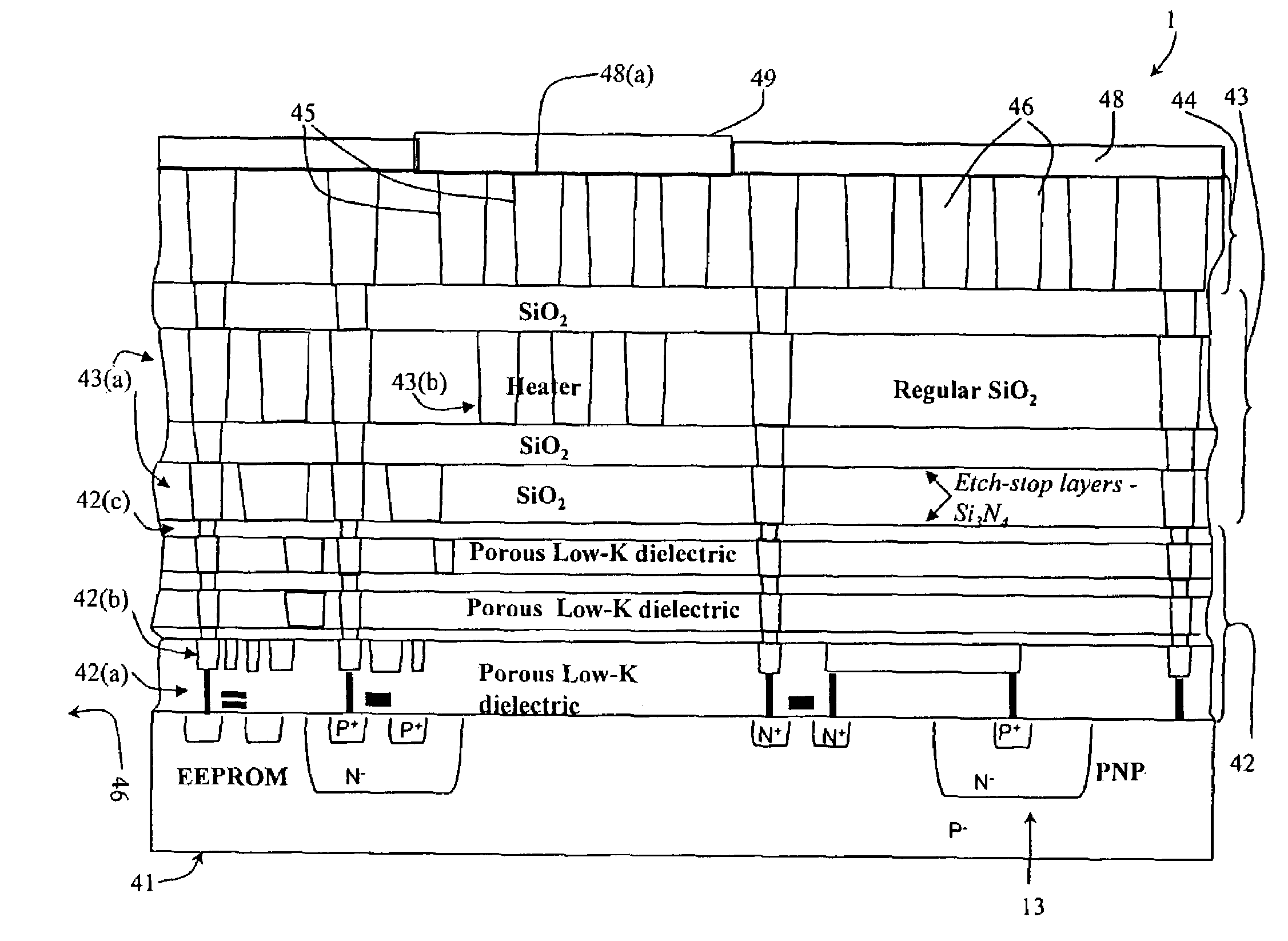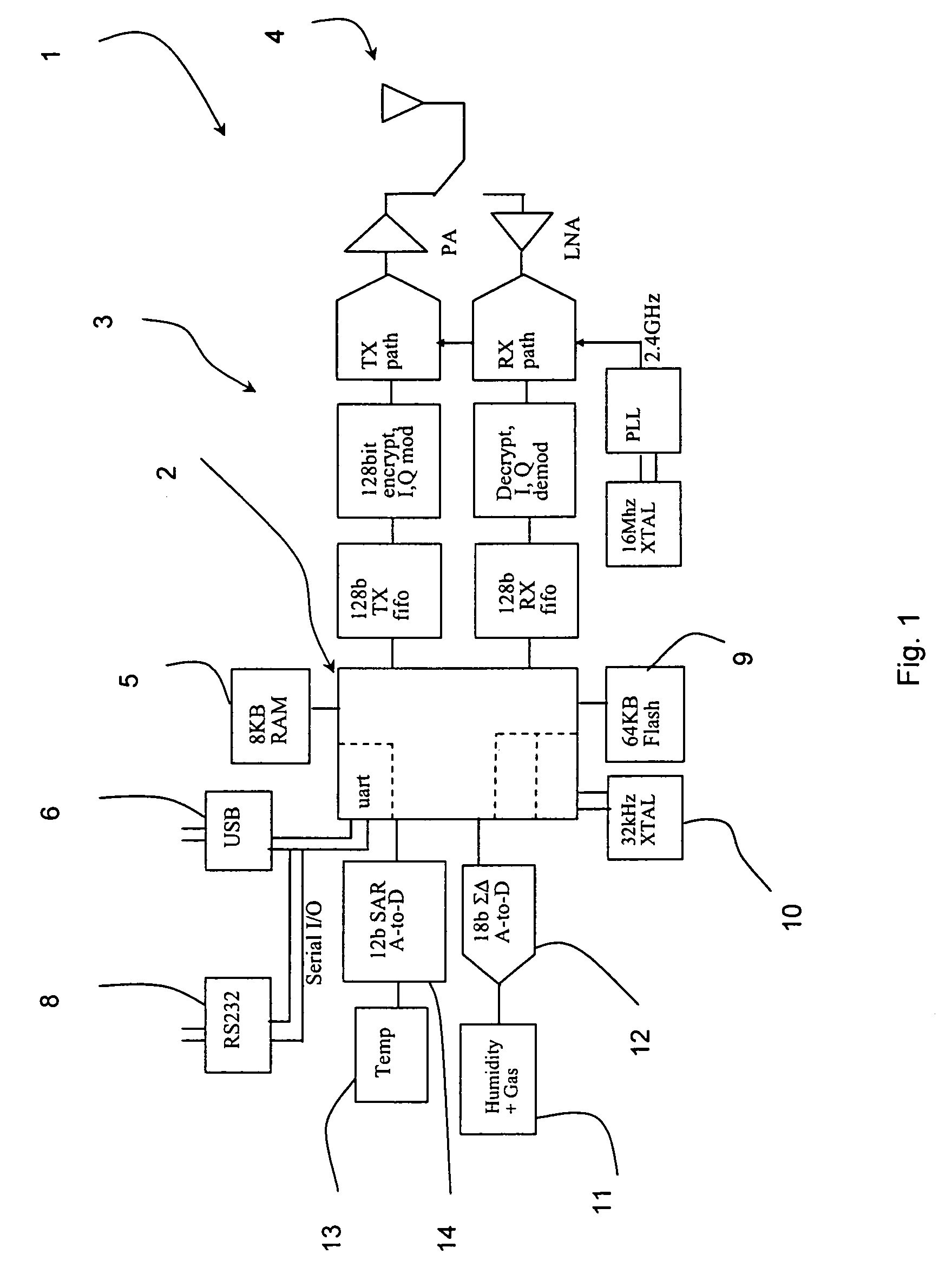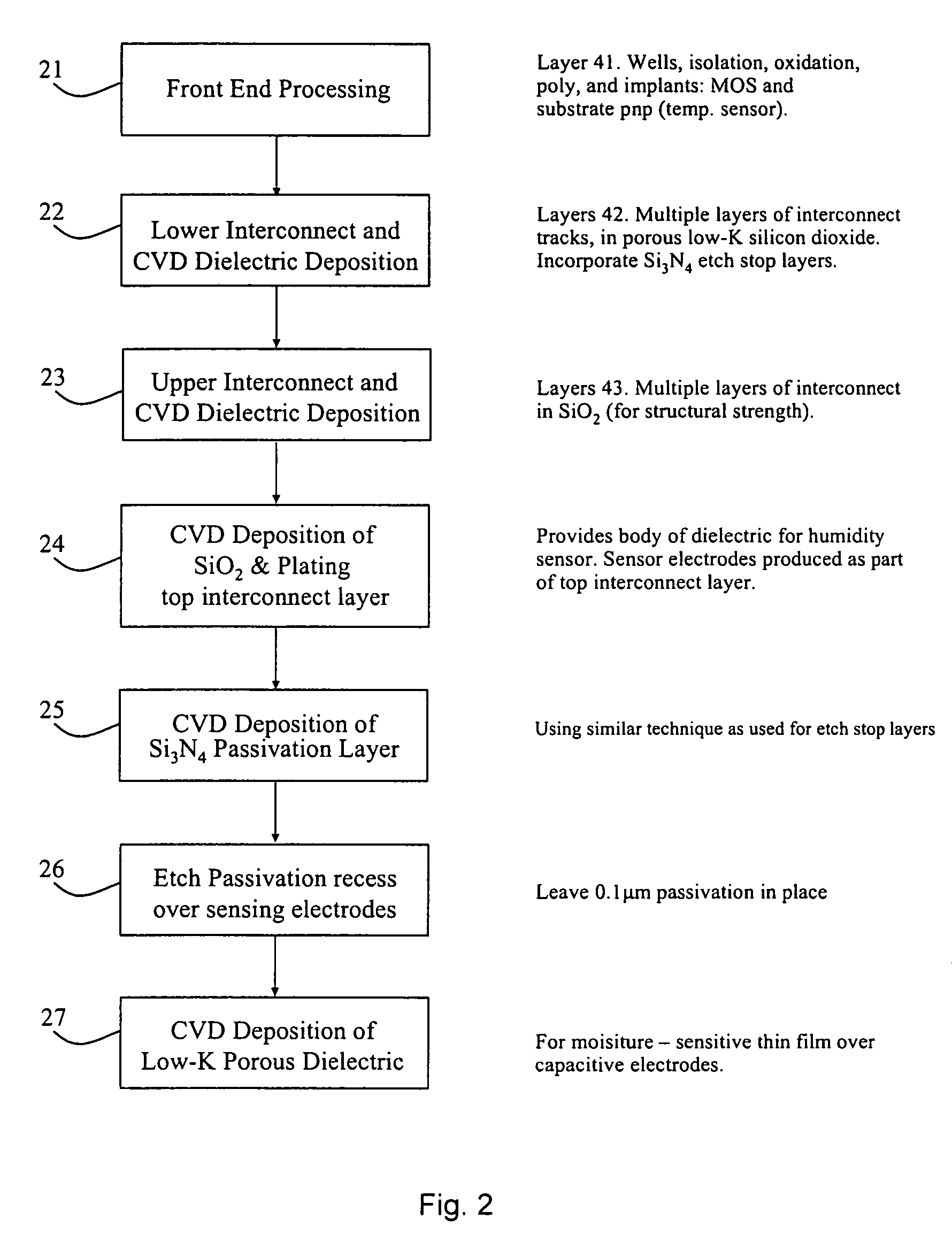Integrated CMOS porous sensor
a porous sensor and integrated technology, applied in the field of electromechanical sensors, can solve the problems of low power, slow integration, and conventional manufacturing of sensor elements on ceramic or glass substrates, and achieve the effect of improving outpu
- Summary
- Abstract
- Description
- Claims
- Application Information
AI Technical Summary
Benefits of technology
Problems solved by technology
Method used
Image
Examples
Embodiment Construction
Brief Description of the Drawings
[0051]The invention will be more clearly understood from the following description of some embodiments thereof, given by way of example only with reference to the accompanying drawings in which:
[0052]FIG. 1 is a block diagram of a single-chip wireless sensor device of the invention;
[0053]FIG. 2 is a flow diagram illustrating a process for producing the device;
[0054]FIG. 3(a) is a cross-sectional view of the device, FIG. 3(b) is a plan view of sensing electrodes; and FIG. 3(c) is a diagram showing extent of a fringe field between the electrodes;
[0055]FIG. 4 is a schematic of an A-to-D converter of the device;
[0056]FIG. 5 is a diagram showing a sensor component of an alternative embodiment;
[0057]FIGS. 6 and 7 are cross-sectional views of alternative sensor components;
[0058]FIG. 8 is a diagram of a potting arrangement for final packaging;
[0059]FIG. 9 is a circuit diagram of a 12-bit SAR A-to-D converter of the sensor device;
[0060]FIG. 10 is a layout vie...
PUM
| Property | Measurement | Unit |
|---|---|---|
| length | aaaaa | aaaaa |
| capacitance | aaaaa | aaaaa |
| thickness | aaaaa | aaaaa |
Abstract
Description
Claims
Application Information
 Login to View More
Login to View More - R&D
- Intellectual Property
- Life Sciences
- Materials
- Tech Scout
- Unparalleled Data Quality
- Higher Quality Content
- 60% Fewer Hallucinations
Browse by: Latest US Patents, China's latest patents, Technical Efficacy Thesaurus, Application Domain, Technology Topic, Popular Technical Reports.
© 2025 PatSnap. All rights reserved.Legal|Privacy policy|Modern Slavery Act Transparency Statement|Sitemap|About US| Contact US: help@patsnap.com



